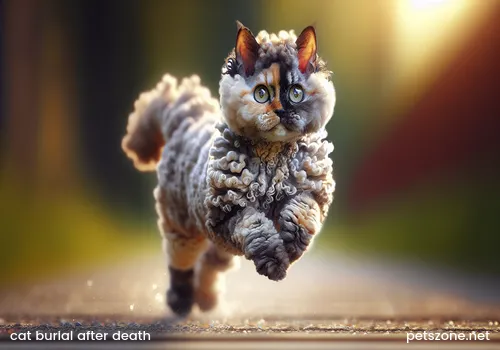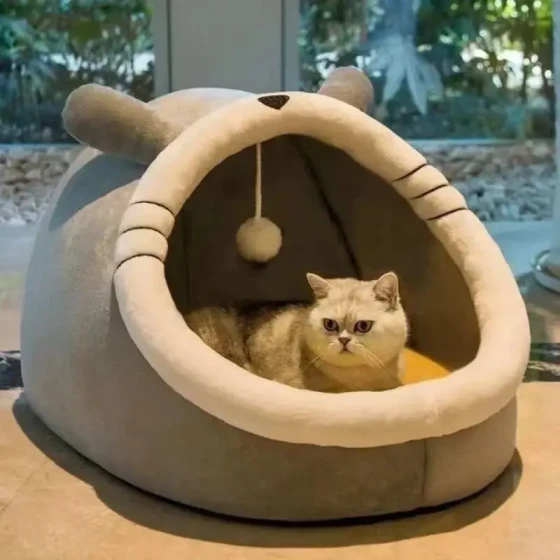Is it true that cats cannot be buried after death_Precautions for burying pet cats after passing away
Many pet owners, when facing the passing of their beloved cats, fall into great sorrow and confusion: how to properly arrange their remains? Burial, a choice that sounds full of the sentiment of "resting in peace," is it really feasible? Simply put, cats can be buried after death, but this is not without restrictions. One must consider a series of potential risks and precautions. It is not that "cats cannot be buried," but rather "one cannot bury them carelessly."

Losing a pet is like losing an important family member; the heartache is inexpressible. When handling a cat’s after-death affairs, we hope to give them a final respectful arrangement. Burial, because it provides a fixed memorial site and feels like returning to nature, is the first choice for many. However, as mentioned earlier, this method is not without hazards. We need to fully understand relevant knowledge and requirements before making a decision.
After a cat dies, is it really impossible to bury it?
The saying "cats cannot be buried after death" is not because of the cat’s soul or any supernatural reasons, but out of concerns for public health, environmental safety, and the transmission of animal diseases. If handled improperly, a simple backyard burial may bring real problems.
Imagine if a cat dies from an infectious disease, such as rabies (though rare, caution is needed) or some severe viral infection. Simply digging a hole and burying it can contaminate the soil with pathogens, which could even spread through groundwater, posing risks to other animals and humans. Additionally, if the burial is not deep enough, the odor from the remains may attract stray or wild animals to dig, which is not only heartbreaking but may further spread diseases.
Therefore, the more accurate understanding of "cannot be buried" is: cannot be buried casually, indiscriminately, or irresponsibly. Compliance and safe burial require meeting certain conditions and requirements.
Potential risks of burying pet cats
Before choosing burial, we must face the risks involved:
- Disease transmission risk: If the cat died from an infectious disease, pathogens might survive in the soil for some time, threatening other pets, wildlife, and even human health. Special caution is required for zoonoses.
- Environmental pollution: Pets may have received medical treatments during their lives, especially euthanasia drugs. These chemicals may pollute soil and water sources. Although doses are usually small, the potential long-term impact cannot be ignored.
- Attracting wild or stray animals: If not buried deeply enough, the smell of remains may attract scavengers or stray animals to disturb the burial site, increasing disease transmission possibilities.
- Legal and regulatory restrictions: Many cities or regions have clear rules on handling animal remains. Burial, especially in public or densely populated residential areas, is usually prohibited. Violations may lead to fines.
If choosing burial, what precautions should be taken?
If your living environment allows and you decide to bury your cat, the following precautions are especially important:
- Verify local regulations: This is the first and most critical step. Different cities and communities have varied rules on animal remains. Some places completely forbid private burial, while others have specific requirements for depth and location. You can consult local government, sanitation departments, or community committees to understand the detailed rules and avoid unnecessary trouble. Remember, "ignorance of the law is no excuse" does not apply here.
- Choose an appropriate burial site:
- Away from water sources: Make sure to select a place far from any water sources (rivers, lakes, wells), at least tens of meters away, to prevent groundwater contamination.
- Away from public areas: Do not bury pets in parks, green spaces, or other public places. This is not only a matter of rules but also respect for others.
- Choose private land: Preferably bury on your own private property where the site will not be easily dug up or developed in the future.
- Ensure sufficient burial depth: This is key to preventing animals from digging up the remains. Generally, it is recommended to dig a 1 to 1.5 meters deep hole. To put it simply, it’s about half to two-thirds of an average person’s height, effectively preventing most animals from digging.
- Handling the remains:
- Wrap the body: Carefully wrap the cat’s remains in breathable, biodegradable materials such as cotton or burlap.
- Use containers (optional): You can place the wrapped remains in a biodegradable container, such as an untreated wooden box or thick cardboard box. Avoid plastic bags or containers as they do not decompose easily and pollute the environment.
- Remove non-biodegradable items: Before burial, remove collars, ID tags, and other items that do not degrade readily.
- Cause of death considerations: If the cat died of an infectious disease (such as feline distemper, rabies, etc.), for public health safety, burial is strongly discouraged. In such cases, the safest and most responsible option is professional pet cremation services.
- Backfilling and marking: After placing the remains in the hole, fill back completely with the dug soil and compact it slightly. You may place a stone, plant a small tree, or set a simple marker at the burial site as a memorial.
Besides burial, what other options are there?
Besides burial, pet cremation is becoming increasingly popular domestically. Compared to burial, cremation has clear advantages and aligns better with modern urban lifestyles and environmental concepts:
- Professional pet cremation: This is currently the most common and recommended method. Professional pet funeral agencies have specialized cremation equipment.
- Individual cremation: Choosing individual cremation allows you to participate in the farewell ceremony fully and collect the cat’s ashes afterward, which can be kept in an urn or used in other memorial forms (such as keepsakes, tree burial, etc.). Costs are relatively higher, ranging from several hundred to over a thousand RMB depending on city and pet weight.
- Group cremation: Multiple pets are cremated together without returning ashes. This method is cheaper, usually within several hundred RMB.
- Advantages: Cremation completely eliminates disease transmission risks, has minimal environmental impact, is legal and compliant, and ashes are easy to preserve or handle, offering owners more memorial options.
- Pet cemeteries: Some cities have specialized pet cemeteries that provide burial plots similar to human cemeteries. These offer long-term memorial places but are more costly and require regular maintenance.
- Entrusting veterinary clinics: Some veterinary clinics provide animal remains disposal services, usually by coordinating with pet funeral agencies for cremation.
Emotional placement: coping with the grief of pet loss
Regardless of which method is chosen for handling the cat’s remains, the most important thing is to allow yourself time to grieve and heal. The sorrow caused by losing a pet is real and profound. Allow yourself to cry, remember, talk with family and friends, or write journal entries to record fond memories of your cat—all are very helpful. Holding a simple farewell ceremony or commemorating with photos and mementos helps us better overcome the pain.
Frequently asked questions
- Will burying a cat in the yard attract rats or other animals?
If the burial depth is insufficient (less than 1 meter) or the remains are not properly wrapped, the smell can indeed attract rats, stray cats and dogs, or other wild animals to dig. Thus, ensuring sufficient depth is key. - My cat died naturally at home. Can I bury it in the nearby green area?
No. Public green spaces are public areas, and privately burying animal remains there is prohibited and may incur fines. Even in your own yard, you must confirm local laws and meet relevant conditions. - Is pet cremation expensive? How much does it cost?
The cost of pet cremation varies by region, pet weight, and service type (individual or group cremation). Individual cremation is usually pricier. In some big cities, individual cremation of a cat can cost between 500 to 1500 RMB, while group cremation typically costs a few hundred RMB or less. - Can a cat with a severe illness still be buried?
Not recommended. Especially if the cause of death is infectious, to avoid pathogen spread, the safest and most responsible method is professional pet cremation. Consult your veterinarian for advice about the cat’s cause of death.
Summary
Regarding the question "Is it true that cats cannot be buried after death?", the answer is that it is not absolutely forbidden. However, simple, unconsidered burial indeed carries health and environmental risks. Safe burial requires meeting legal regulations, proper burial depth, and suitable location choices. For most city residents, professional pet cremation is a safer, more environmentally-friendly, and more convenient option, also providing a dignified farewell ceremony. Whichever method you choose, the most important is to act with love and respect, making final arrangements for the furry companions who accompanied us through beautiful times, and allowing yourself time to cope with the sorrow of parting.



